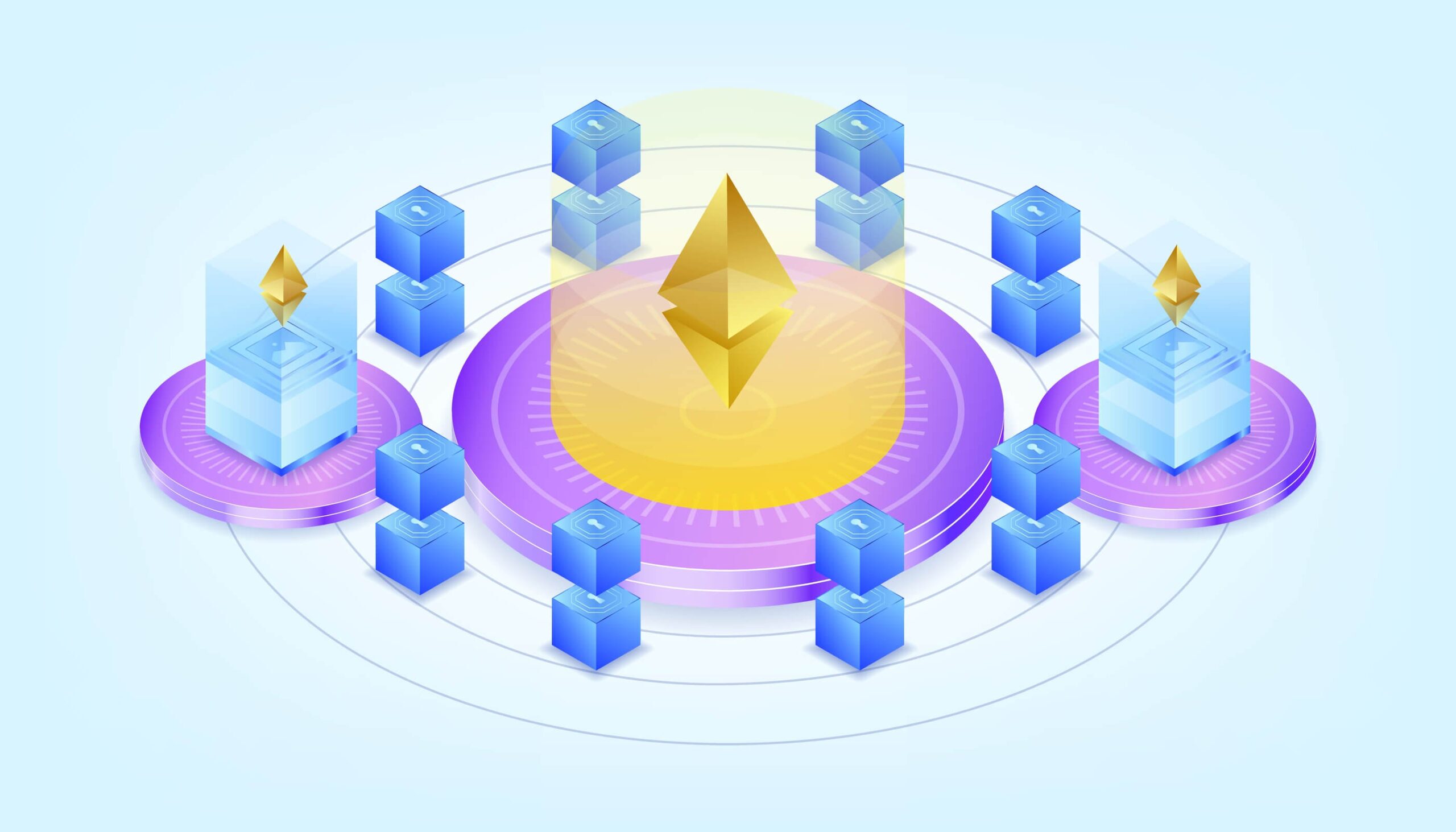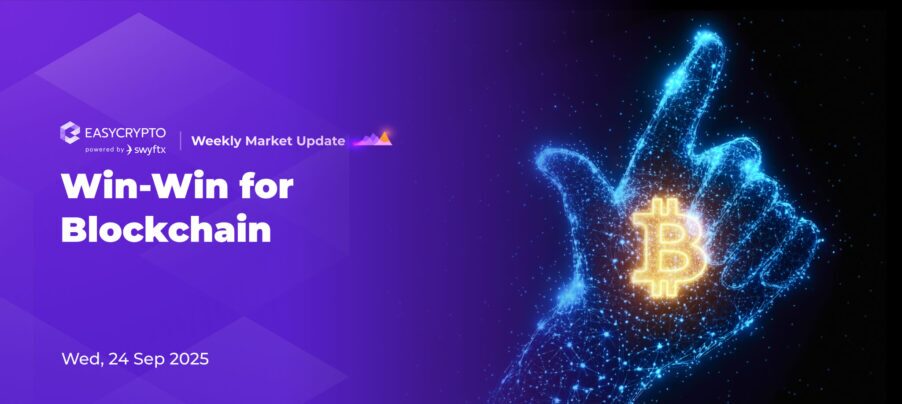Ethereum’s Dencun Upgrade, explained
Dencun opens the possibility for Ethereum to process 100,000 transactions per second. Read about how this upgrade will help Ethereum scale.


Ethereum is on the brink of yet another significant upgrade, known as the Dencun Upgrade, which is scheduled this March. It’s also generating considerable buzz in the cryptocurrency community as of writing.
A while after the upgrade, Ethereum may enjoy a more even playing field with its speedy rivals like Cardano, Solana, and many other smart contract blockchains, as the next upgrade focuses on one thing — preparing Ethereum for speed.
This update opens the possibility for Ethereum to process a whopping 100,000 transactions per second. While this is exciting for long-term Ethereum investors as the network is developing to scale up to its potential, they should also be wary of exaggerated claims and downright false news, which is common in the crypto space.
New to ethereum? Start here.
Ethereum will not run faster — not yet
Ethereum’s current theoretical throughput sits at a modest 47 transactions per second, a far cry from the lightning-fast processing capabilities of Solana, which is handling around 3000 transactions per second at the time of writing.
Dencun Upgrade may help improve Ethereum’s throughput in the future, but this speed boost won’t be immediately reflected on the network.
After all, the idea that the upgrade could immediately improve the throughput by more than 2000 times is ridiculous.

The sudden change could break Ethereum’s economic model, where a small amount of ETH is burned at every transaction.
The supply of ETH could topple out of balance, and the Ethereum Foundation is not known for making drastic changes to the network within a short period.
Instead, the Dencun Upgrade will reduce the costs for Layer 2 networks to roll up transactions to the Ethereum main chain.
How will the Dencun Upgrade improve Ethereum?
While Dencun will not improve the Ethereum blockchain’s throughput directly, Dencun is still one of the crucial foundational upgrades that can help it achieve the scalability that it needs in order to become the world’s computer as envisioned by Vitalik Buterin.
Presently, this is how Ethereum is solving its scalability problems. Ethereum updates its ledger every 13 seconds. Every 13 seconds, it is able to process around 600 transactions, giving it a throughput of 47 transactions per second.

But until that 13 seconds is up (or 14 or even 20, when the network is congested), no transaction is valid just yet. This means, no matter how many transactions you can fit into Ethereum, the main chain will always update after more than 10 seconds.
An analogy of this is that of a train line. No matter how many carriages it has, it will take roughly the same amount of time for the train to get from one station to another. So, just as the train’s speed is fixed, Ethereum’s transaction speed is fixed.
Of course, this is not a good experience for someone wanting to make very frequent transactions — someone like a day trader, or maybe their trading bot. So, sidechains like Polygon are built to process transactions in less time — 3 seconds in the case for Polygon.
But a sidechain is not as secure as Ethereum. So, these sidechains create a summary of transactions on its chain, and post it onto Ethereum as a single transaction every so often. Currently, doing so would impose the sidechains a decent amount of ETH in fees, and this cost is passed onto end user.
Data posted by the sidechains are always available on Ethereum’s blockchain. At first glance, it may seem like a good idea to always have access to this data.
But in reality, this takes up more resources than necessary, and the resource requirement will only increase as more people use Ethereum and its sidechains.
Dencun Upgrade introduces “data blobs”
“Data blobs” are data that are only temporarily accessible by the EVM, which is the core software that runs on Ethereum’s blockchain. These chunks of data contain the rollup “receipts” coming from sidechains.
The protocol that runs checks on these sidechain receipts are called Provers. Provers use the EVM to check the claims made by the sidechains. It’s often the case that a great majority of Provers have finished conducting their audits within 3 months.
Ethereum developers use this statistic to their advantage, by allowing data blobs to be rendered unavailable after 1 to 3 months.
While the processed sidechain data remains on the blockchain, it cannot be accessed and run using the EVM by node operators. This frees up memory space, and significantly lowers the cost for sidechains to post transactions onto the main Ethereum chain.

Think of the data blobs like video files, which the Provers can replay in order to reconstruct how the sidechain transactions came to be, for which they can either validate or reject a rollup.
After a certain amount of time, there is no need for this video file to be replayed again. At which point, a thumbnail of that video would prove sufficient.
In this way, Ethereum will save a lot of memory space and computational resources, making it cheaper for sidechains like Polygon, Arbitrum and Optimism to operate, and potentially attracting more developers of sidechains to help Ethereum scale up even more.
How will this affect the price of Ethereum?
Long-term holders of ETH have long experienced the expensive gas fees on Ethereum. They have long wished for it to get cheaper so that the rest of the world can jump in and try it out. News such as the Dencun Upgrade may generate some excitement among new and old investors.
However, it’s important to manage our expectations when it comes to price action. After all, the Merge was one of the most impactful change to Ethereum, yet the price movement of ETH at the time seemed lackluster. It may be possible that investors didn’t fully grasp the long-term significance of the Merge.

In a similar vein, Dencun Upgrade may sound exciting until we read the finer details. However, don’t let the price of ETH downplay the significance of the upgrade.
If we don’t appreciate what the Ethereum developers have done for the network, we could miss an opportunity of picking up real value while the rest of the market hasn’t been fully aware of its implications.
The takeaways
Dencun Upgrade is one of many upgrades that will slowly improve Ethereum over time. Through the Merge, Ethereum became energy efficient. Through Dencun, Ethereum will be cost-efficient for layer two rollups.
As time progresses, more upgrades could make Ethereum more powerful, more secure, and more capable than it is today.
Further reading: Explore more topics on all things crypto.
Share to
Stay curious and informed
Your info will be handled according to our Privacy Policy.
Make sure to follow our Twitter, Instagram, and YouTube channel to stay up-to-date with Easy Crypto!
Also, don’t forget to subscribe to our monthly newsletter to have the latest crypto insights, news, and updates delivered to our inbox.
Disclaimer: Information is current as at the date of publication. This is general information only and is not intended to be advice. Crypto is volatile, carries risk and the value can go up and down. Past performance is not an indicator of future returns. Please do your own research.
Last updated February 13, 2024





